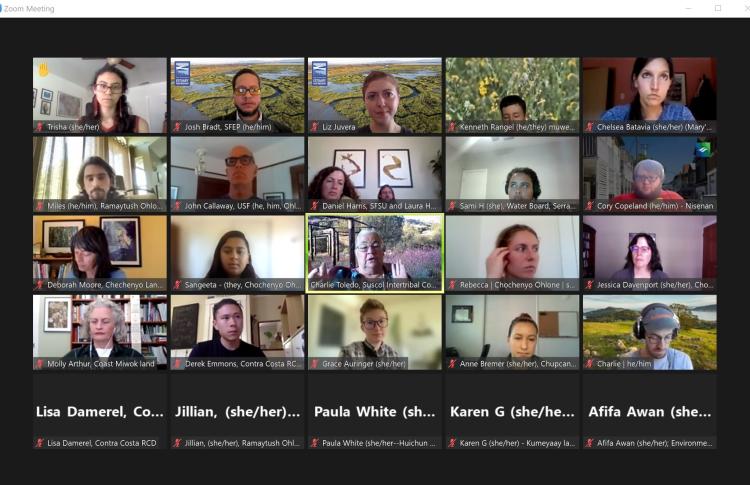
More than 600 attend virtual event
At last week’s State of the Estuary Summit, communities took center stage in planning for a healthy, resilient estuary.
On Friday, Oct. 1, the San Francisco Estuary Partnership hosted a COVID-era version of the biennial State of the Estuary Conference with a free one-day Summit held entirely on Zoom. The format wasn’t the only change, however: the Summit highlighted the voices of youth and environmental justice leaders and advocates from across the region in the daylong event that included speakers, panels and interactive networking sessions.
After a welcome by MTC/ABAG Executive Director Therese McMillan, Representative Jackie Speier reaffirmed her ongoing commitment to ensuring federal funding for the San Francisco Estuary.
“I promise you that I won’t back down until the bay gets what it deserves,” Speier said.
California Natural Resources Secretary Wade Crowfoot followed by acknowledging that environmental challenges are unprecedented and urgent, and commended the work of the over 600 attendees as “poised to confront these problems head on.”
What will it take to meet the environmental challenges posed by climate change in the San Francisco Estuary? As Anthony Khalil, an ecologist and activist for the Bayview Hunters Point community stated, there's no vaccine for climate change, but individuals can inoculate ourselves from its effects by working to protect communities at risk and by addressing disparities. Melissa Jones of BARHII highlighted strategies to address these disparities when government funding for COVID recovery and climate change gets distributed.
Lil Milagro Henriquez of the Mycelium Youth Network reminded attendees that youth belong in the spaces where decisions are being made, and that includes climate planning. Student leaders Gloria Alonso Cruz and Darius Waiters, climate water advocates for Restore the Delta, shared stories of environmental racism in Southside Stockton, including a pervasive problem with harmful algal blooms. The stories of environmental racism - of communities cut off from playing and recreating in local creeks or access to shoreline parks, subjected to higher toxic burdens and lower air quality, and in the case of Bay Area Tribes, erasure and direct removal from ancestral lands - were a throughline for the Summit.
Communities and Tribes are leading the way forward, as Phoenix Armenata, Maria Katticaran, and Marquita Price demonstrated in their presentation on the Oakland Shoreline Leadership Academy.
David Ralston of BAAQMD shared the work taking place in deep east Oakland along San Leandro Creek to develop and implement restoration projects that revitalize the community. Corrina Gould of Sogorea Te’ Land Trust and the Confederated Villages of Lisjan talked about land rematriation as a means of enabling Indigenous peoples to steward their traditional territory “without having to ask permission.” And Valentin Lopez, Chair of the Amah Mutsun Tribal Band, provided a unique perspective on infrastructure as a way to think about estuarine restoration work, saying that Native Infrastructure, unlike Western infrastructure, is the mountains, the rivers, fire, oceans, plants, and wildlife.
“We don’t need to create infrastructure,” Lopez said. “We need to restore it.”
For more on the 2021 State of the Estuary Summit and the work by the San Francisco Estuary Partnership, visit www.sfestuary.org.
The Estuary Partnership is an ABAG program staffed by MTC working to increase the health and resiliency of the San Francisco Estuary. Find other events of interest on the Fall 2021 Conference Map.

